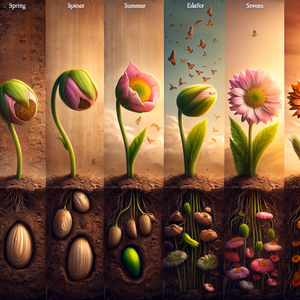From Beaches to Bytes: The Evolution of San Diego's Gaming Industry

The roots of San Diego's gaming industry can be traced back to the 1980s, when small teams of developers began creating video games for home consoles and PCs. One of the earliest success stories was Atari, which established a presence in the area during the gaming boom. This early investment in the region laid the foundation for a burgeoning industry. As technology advanced, companies like Qualcomm and Sony PlayStation recognized San Diego's potential as a tech hub. Qualcomm, a leader in wireless technology, played a crucial role in mobile gaming development, while Sony's establishment of a research facility in the area attracted talent and investment, creating a collaborative environment that encouraged innovation. The establishment of local universities offering programs in game design and computer science, such as those at the University of California, San Diego (UCSD) and San Diego State University (SDSU), further contributed to a skilled workforce ready to dive into the gaming sector.
The Rise of Major Players
By the 2000s, San Diego had become home to significant gaming companies such as Naughty Dog, known for the critically acclaimed Uncharted series, and Electronic Arts (EA), which has produced popular titles like FIFA and The Sims. These companies not only brought recognition to the area but also set a standard for quality and creativity in game development. Naughty Dog's groundbreaking storytelling and character development transformed the narrative potential of video games, leading to awards and accolades that put San Diego on the gaming map. Similarly, EA's influence extended beyond just creating games; the company's success in sports gaming emphasized the importance of realism and engagement, further propelling the gaming industry in the region. The presence of major players has attracted countless smaller studios and indie developers, creating a diverse landscape of gaming talent. The success of studios like Insomniac Games, known for Spyro the Dragon and Ratchet & Clank, and the growth of companies like IllFonic, known for titles such as Friday the 13th: The Game, showcase the innovation and creativity thriving in San Diego. This dynamic environment is further enhanced by the collaborative spirit fostered through local meetups, networking events, and game jams.
Factors Contributing to Growth
Several key factors have contributed to the growth of San Diego's gaming industry: 1. Talent Availability: San Diego's universities have developed strong programs in game design and interactive media. Graduates from these institutions are equipped with the skills needed to thrive in the gaming industry. For instance, UCSD's interdisciplinary approach combines art, technology, and storytelling, producing well-rounded developers and designers. 2. Community and Collaboration: The gaming community in San Diego is vibrant and supportive. Events like Comic-Con and the San Diego International Film Festival have become platforms for developers to showcase their work, connect with fans, and network with industry professionals. Local organizations such as the San Diego Game Developers and the San Diego Indie Game Developers group foster collaboration and mentorship among developers, creating a sense of belonging and support. 3. Investment and Support: The city has seen an increase in investment from venture capitalists looking to fund innovative gaming startups. The presence of organizations like the San Diego Venture Group and local incubators has provided financial and logistical support to nascent companies. Additionally, initiatives aimed at promoting diversity and inclusion within the industry have gained momentum, ensuring that a wider range of voices and perspectives are represented in game development.
Supporting Examples and Evidence
The success of San Diego's gaming industry is evident in the achievements of its companies and the accolades they have received. For instance, Naughty Dog's The Last of Us Part II not only won multiple Game of the Year awards but also showcased the storytelling potential of video games. This success has inspired local developers to push the boundaries of narrative and gameplay. Moreover, the indie game scene in San Diego has been flourishing, with standout titles like Cuphead and Fall Guys gaining international acclaim. These games have demonstrated that creativity and innovation are not limited to large studios, but can also emerge from smaller teams with unique visions. In particular, the success of indie games has highlighted the importance of community support and collaboration, exemplified by events like IndieCade and the San Diego Indie Game Festival, where developers can share their work and gain valuable feedback.
San Diego's gaming industry has come a long way from its early days, evolving into a vibrant and diverse ecosystem that continues to thrive. With its rich history, a strong pool of talent, an encouraging community, and a commitment to innovation, the city is poised to remain a key player in the gaming landscape for years to come. As technology advances and new opportunities arise, San Diego's gaming scene will undoubtedly continue to capture the imagination of developers and gamers alike, proving that from beaches to bytes, the journey has only just begun. With the right support and continued investment, San Diego is set to not only maintain its status as a gaming hub but also to lead the charge in shaping the future of interactive entertainment.
Game Designer
Naughty Dog, Insomniac Games, Electronic Arts
Core Responsibilities
Conceptualize and design game mechanics, levels, and user interfaces that enhance player engagement.
Collaborate with artists and programmers to ensure cohesive gameplay experiences that match the intended vision.
Utilize player feedback and analytics to iteratively improve game design and balance.
Required Skills
Proficiency in design software such as Unity or Unreal Engine.
Strong understanding of game theory and player psychology.
Excellent communication skills to work effectively in a team environment.
Gameplay Programmer
Electronic Arts, IllFonic, Qualcomm
Core Responsibilities
Develop and implement gameplay features, ensuring technical feasibility within the game engine.
Collaborate with designers and artists to create a seamless integration of gameplay mechanics and visuals.
Debug and optimize code to enhance game performance and user experience.
Required Skills
Proficiency in programming languages such as C++ or C#.
Familiarity with game engines like Unreal Engine or Unity.
Strong problem-solving skills and ability to work under tight deadlines.
Narrative Designer
Naughty Dog, Respawn Entertainment, Sony PlayStation
Core Responsibilities
Craft compelling narratives, character arcs, and dialogue that enrich the gaming experience.
Work closely with game designers to integrate story elements into gameplay mechanics.
Conduct research and collaborate with writers to ensure narrative consistency and depth.
Required Skills
Experience in creative writing, storytelling, or scriptwriting.
Understanding of narrative structure and pacing in interactive media.
Ability to work collaboratively within a multidisciplinary team.
Quality Assurance (QA) Tester
Electronic Arts, Bethesda Game Studios, Ubisoft San Diego
Core Responsibilities
Conduct thorough testing of game builds to identify bugs, glitches, and usability issues.
Document findings and work with development teams to ensure timely resolution of issues.
Develop and execute test plans and scripts to validate game functionality and performance.
Required Skills
Detail-oriented with strong analytical skills.
Familiarity with bug tracking software and testing methodologies.
Excellent communication skills to report issues clearly and effectively.
3D Artist
Insomniac Games, Naughty Dog, Activision Blizzard
Core Responsibilities
Create high-quality 3D models, textures, and animations for characters, environments, and props.
Collaborate with the art director and designers to ensure visual consistency and style across the game.
Optimize assets for performance while maintaining visual fidelity within the game engine.
Required Skills
Proficiency in 3D modeling software such as Blender, Maya, or 3ds Max.
Strong understanding of texture mapping, lighting, and rendering techniques.
Knowledge of game engines like Unity or Unreal Engine for asset integration.


